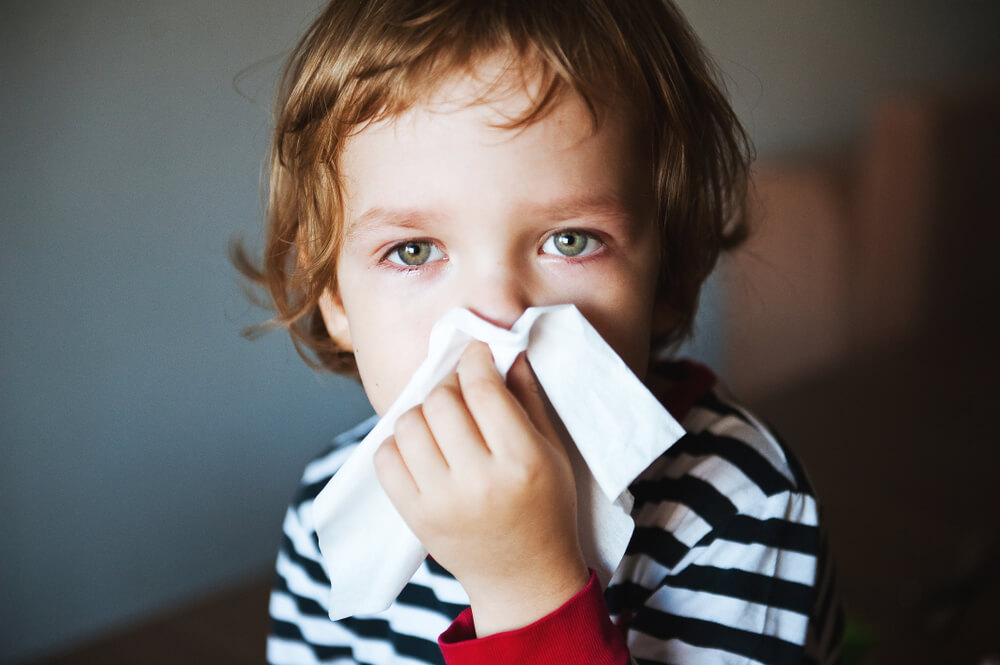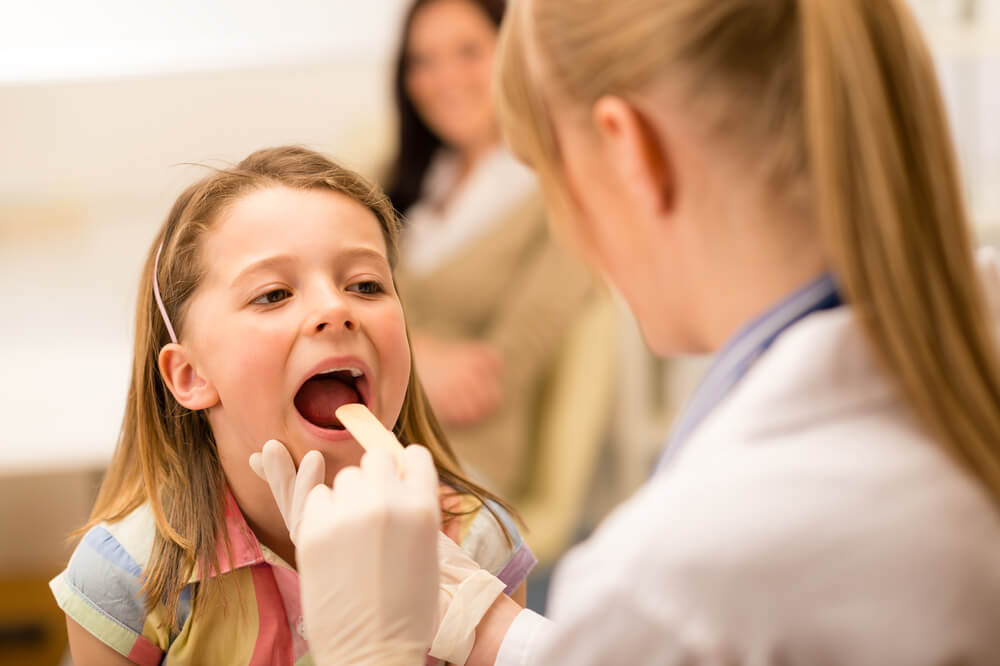If you are a new parent, then you may want to know more about common illnesses and pediatric diseases that your child may get, including the symptoms and the best treatments for them. About 32 million American children missed school last year because of an illness, which demonstrates how common it is for young people to get sick. You might want to keep this guide handy so that you have a clue of what’s going on when your child wakes you up in the middle of the night and says that they do not feel well.
What Are the Most Common Pediatric Diseases?
As a parent, despite your best efforts to keep everything sanitary, your child may come down with many common childhood illnesses. If the disease is contagious, you may even discover that it passes through your entire household, even when you make attempts to stop its spread. Here’s a closer look at eight of the most common childhood illnesses that you should know about:
1. Cold
About 52.2 million colds are endured by children in America annually. Babies and toddlers younger than 5 get about five to seven colds each year while elementary and middle school children often get six colds per year. Teens are likely to get about four colds per year. Colds are the most common contagious disease in children. Some of the symptoms include:
- Tickle in the throat
- Runny or stuffy nose
- Tiredness
- Sore throat
- Cough
- Headache
- Low-grade fever
- Muscle aches
- Loss of appetite
You can do several things to help a child with a cold. Run a cool-mist humidifier in their room. You can give them acetaminophen or ibuprofen to help relieve aches and pains. Dab petroleum jelly under the nostrils to help stop rawness, and saltwater drops in the nostrils may help relieve stuffiness. For older children, cough drops and hard candy may soothe coughs.

2. Respiratory Syncytial Virus (RSV)
A recent count indicated that there were 2.1 million outpatient visits for RSV in children under 5, and over 57,000 children ended up being hospitalized in America due to this virus that infects the airways. RSV is particularly a problem from mid-September to mid-April. It is the most common cause of bronchiolitis and pneumonia in children under 1. Thankfully, most children outgrow this disease before they start school. RSV symptoms can include:
- Runny nose
- Decrease in appetite
- Coughing
- Sneezing
- Fever
- Wheezing
The CDC says that almost all children will have at least one episode of RSV before their second birthday. Over-the-counter drugs, like acetaminophen and ibuprofen, can be given for fever and to help with aches and pains. Encourage your child to drink clear fluids so that they do not become dehydrated.
3. Roseola
About 85% of the time, roseola is caused by the human herpesvirus 6. Other enteroviruses that are usually passed through saliva cause the remaining cases of roseola. This virus, which causes a fever followed by a rash, often has an incubation period of five to 15 days. The symptoms include:
- Fever that is often higher than 103 degrees Fahrenheit
- Rash
- Irritability
- Mild diarrhea
- Loss of appetite
- Swollen eyelids
Since this pediatric disease has been known to cause seizures due to high fever, it is essential to seek medical care if your child’s fever exceeds 103 degrees Fahrenheit. Of course, if your child does have a seizure, then call an ambulance immediately.
4. Gastroenteritis
Often called the stomach flu, gastroenteritis is an inflammation of the stomach and the intestines. About 1.5 million kids in America see their doctor annually because of acute gastroenteritis, and about 300,000 of them end up in the hospital. Unfortunately, about 2 million kids die worldwide from this disease annually. Dehydration is often the primary problem when children come down with this disease. While a virus is the most common cause of gastroenteritis, it can also be caused by bacteria, parasites, drugs, and chemical toxins. Common gastroenteritis symptoms include:
- Vomiting
- Diarrhea
- Abdominal cramps
- Fever
- Poor appetite
Your doctor may recommend very little treatment for gastroenteritis if your child is staying hydrated. Giving small sips of clear fluids can help with that. In some cases, the doctor may recommend a medication to stop the vomiting.
5. Hand-Foot-Mouth Disease
This mildly contagious infection is usually caused by coxsackievirus. It causes sores inside the mouth and a rash on the child’s hands and feet. This disease, which is more common in the summer and fall, usually affects children under 5 years old. While this disease is generally not fatal, it is very contagious. Symptoms include:
- Mouth sores
- Skin rash
- Fever
- Sore throat
- Loss of appetite
There is no specific treatment for hand-foot-and-mouth disease. Make sure that your child stays hydrated. If they have trouble swallowing because of the sores, give them ibuprofen or acetaminophen to help reduce the pain.

6. Fifth Disease
Caused by parvovirus B19, fifth disease is also called erythema infectiosum. It will usually appear about 15 days after your child has been in contact with someone else who has the disease. Your child may look like someone has slapped their cheeks, and a second rash may appear a few days later on their chest, back, buttocks, arms or legs. Fifth disease symptoms include:
- Rash
- Fever
- Runny nose
- Headache
- Painful or swollen joints
Symptoms usually disappear in about seven days. You may want to give your child something to control pain and swelling as well as itching.
7. Group A Strep
Approximately 18,500 cases of group A strep are diagnosed in the United States annually, and about 1,500 children die from it. The main reason children die is that the infection causing the strep becomes invasive and attacks other body parts that are usually germ-free. Around the globe, it generates about 111 million cases of impetigo, 470,000 new cases of acute rheumatic fever and 282,000 new cases of rheumatic heart disease. Symptoms may include:
- Fever
- Dizziness
- Confusion
- Low blood pressure
- Rash
- Abdominal pain.
Most cases of group A strep can easily be treated with inexpensive antibiotics. Take your child to see the doctor and follow his or her instructions for treating your child’s condition.
8. Influenza
The flu can make your child feel horrible, and it can be very contagious. Depending on the strain around each year, the flu can cause many children to end up in the hospital with pneumonia. It can also cause ear and sinus infections. Children under 2 are at a higher risk of getting the flu. Here are some symptoms to watch for:
- Fever
- Cough
- Sore throat
- Runny or stuffy nose
- Body aches
- Headache
- Fatigue
- Vomiting
- Diarrhea
Most doctors recommend that children over 6 months old get a flu vaccine annually. If your child gets the flu, contact your doctor and they will decide if your child needs antibiotics.
How Can You Control Childhood Diseases in Your Home?
There are many ways that your child can become sick, and most children will spend at least a few days not feeling great during their childhood. You can help limit the number of days by teaching your child to wash their hands with soap frequently. Cleaning frequently touched surfaces can help keep illness out of your home. Additionally, keeping people who are sick isolated can help stop contagious diseases from spreading from one ill child to other family members.
Call us today to set up an appointment.



